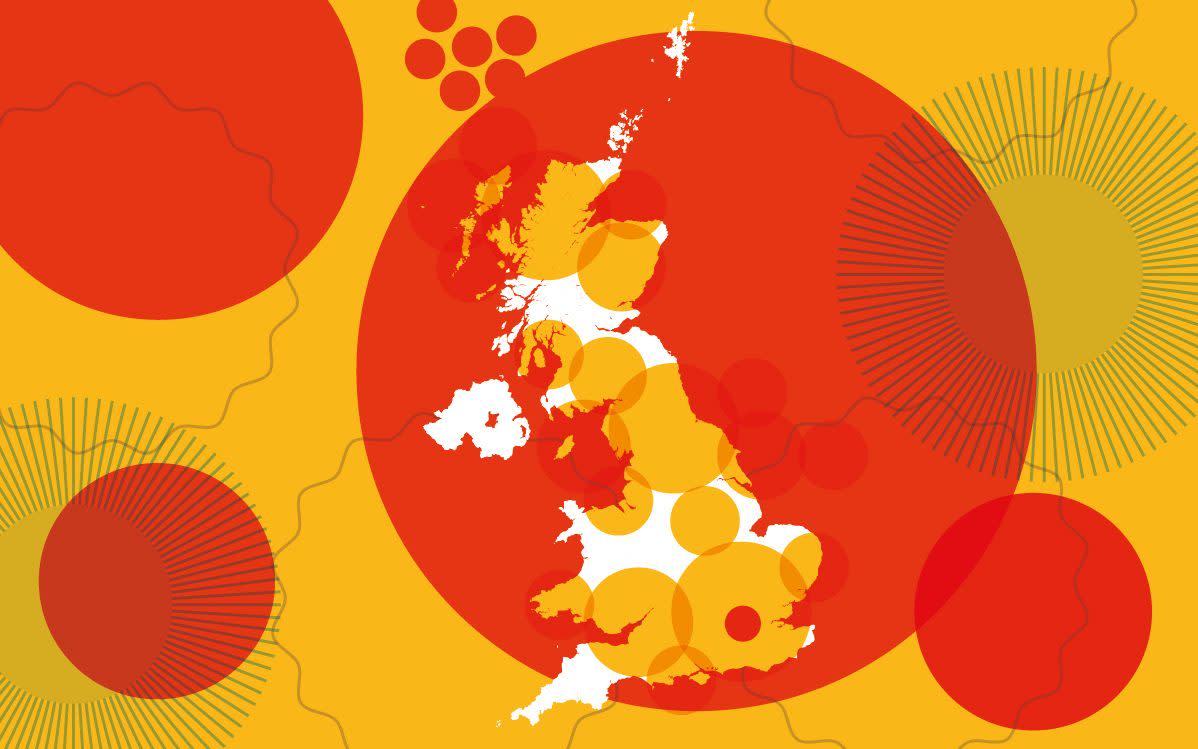In charts: how Covid lingered across northern England despite lockdown

One in five neighbourhoods in the North are seeing more cases of coronavirus than when they were first put in lockdown, data shows, amid the Government reversing its decision to lift restrictions in Bolton and Trafford.
The ban on home visits in Bolton and Trafford, which have seen cases surge in the last few days, was due to end this morning, but the Government faced calls from local councils and the Mayor of Greater Manchester, Andy Burnham, to keep the lockdown in place.
Mr Burnham had urged residents to ignore the lifting of restrictions, amid the weekly infection rate in Bolton rising to 66.6 per 100,000, over three times the rate of 18.9 seen between 17 and 23 August.
However, speaking at Prime Minister's Questions today, Boris Johnson revealed restrictions would remain in place, following an emergency meeting between officials alarmed by a surge in cases in the two areas.
Health Secretary Matt Hancock later said: “Following a significant change in the level of infection rates over the last few days, a decision has been taken that Bolton and Trafford will now remain under existing restrictions.
“This decision has been made in collaboration with local leaders after reviewing the latest data. We continually monitor outbreaks across the country, and have seen infection rates increase more than three times in Bolton in under a week, and double in Trafford since the last review.
“We have always been clear we will take swift and decisive action where needed to contain outbreaks. We can bring the rates down if we continue to work together and I urge everyone to continue to play their part by following the rules – get tested if you have symptoms, self-isolate and practice social distancing.”
Infection rates linger across the North
According to the latest available local infection data, 11 of the 63 neighbourhoods across Bolton and Trafford are now seeing higher rates of infection than before lockdown was imposed.
51 saw fewer than two cases in the last seven days, based on cases reported by 30 August with specimen dates before 28 August.
While the localised data experiences a lag in reporting, it reveals the rates of infection remain high across swathes of northern England where restrictions were imposed in late July, with 127 out of 554 neighbourhoods in the locked down region seeing higher rates than before ban on home visits.
In addition 41 neighbourhoods, known as Middle Super Output Areas (MSOAs) across the affected area still have weekly infection rates above 5 per 10,000 residents, compared with 48 in the week leading to the local lockdown.
And some of the highest rates are in neighbourhoods where restrictions have now been lifted.
The ten neighbourhoods with the highest rates of infection over the last seven days, allowing for the lag in reporting, were all in Oldham, Bradford, Manchester, Pendle, Blackbrun and Calderdale.
The worst affected was Werneth in Oldham, with a rate close to 19 per 10,000 residents in the last seven days of data.

A spokesman for Sir Keir Starmer said the decision to reimpose restrictions in Bolton and Trafford was "utterly chaotic". "At a time when the Prime Minister is saying we need an ounce of confidence to get the economy growing, when you see chaos like this it gives people no confidence in the Government's approach," the spokesman told a Westminster briefing.
"And it's another sign of their incompetence which is holding Britain back from this recovery."

 Yahoo News
Yahoo News 
